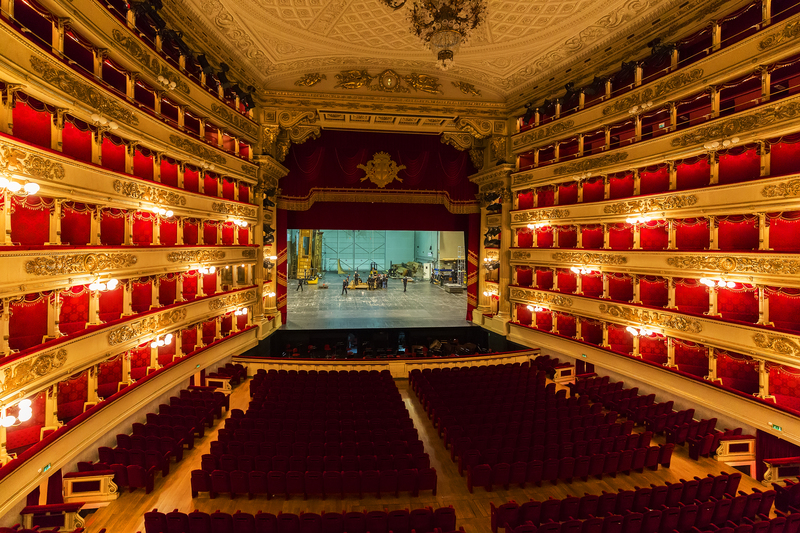
It’s all red velvet and ornate gold decorations, and the walls aren’t walls but are row upon row of private boxes. If you’ve never seen the inside of an old-fashioned opera theatre, the interior of La Scala might make you feel like you’ve stepped back in time. As long as there isn’t a dress rehearsal or some other thing going on on the stage, you’re directed into one of the theatre boxes opposite the stage. The best part of a tour of the La Scala Museum, however, comes near the end when you get to pass through one of the theatre’s fancy foyers into the theatre itself. You’ll see opera costumes, portraits and busts of famous opera singers, original set design pieces, and several historic musical instruments. While much of what’s on display is either not well-marked in English or perhaps only interesting to serious opera fanatics, some of the museum’s collection is interesting to anyone who is drawn to theatre in any form.

In fact, many times these composers would not only write the opera being performed but also act as the orchestra’s conductor for premiere performances.Īll of this history – as well as a larger history of Italian opera and theatre – is contained in the La Scala Museum, or Museo Teatrale alla Scala, contained in part of the opera house itself. The composers who have chosen La Scala to debut their work includes names like Salieri, Rossini, Verdi, and Puccini – some of the most famous Italian composers. Opera houses like to list the operas which premiered on their stage, and La Scala’s list of debuts is impressive by any standard. The theatre you see today was renovated first in 1907, and then in the mid-1940s after it was damaged by World War II bombs. The building which used to stand where La Scala stands today was a church dedicated to Santa Maria della Scala, or Holy Mary of the Staircase, so in a nod to the church the theatre was given the name of Teatro alla Scala. That plot of land was already occupied, but that didn’t stop city officials from building a threatre there anyway. The city’s former opera theatre burned in a fire in 1776, and the new one was designed for and built on a new plot of land in Milan. La Scala opened in 1778, but Milan hadn’t gone without an opera house prior to that.
#La scala opera how to
> Skip ahead to read about visiting the La Scala Museum, seeing an opera at La Scala, how to get tickets to La Scala, and what to wear to a La Scala performance!

And although getting tickets to a performance at La Scala can be a challenge (not to mention expensive), you can check out the La Scala Museum easily – and as a bonus, it comes with a peek inside one of the lush opera boxes in the theatre. Milan’s Teatro alla Scala, known most commonly simply as La Scala, is not only one of Italy’s most famous venues for opera, it’s one of the most famous anywhere.

I’m going to suggest that even if you can’t stand opera, visiting Italy’s historic opera houses isn’t such a terrible idea – especially when you’re talking about an opera house as storied as La Scala in Milan, conveniently located a short stroll from Milan’s Duomo. There’s the art, the history, the scenery, the wine, the food, the fashion… But unless you’re a hard-core opera fanatic, you might not put opera sights in Italy on your must-see list – despite opera being something this country is famous for. There are just about as many reasons to visit Italy as there are people who visit Italy, but there are some themes that will sound familiar if you ask people why they chose Italy as their vacation spot.


 0 kommentar(er)
0 kommentar(er)
